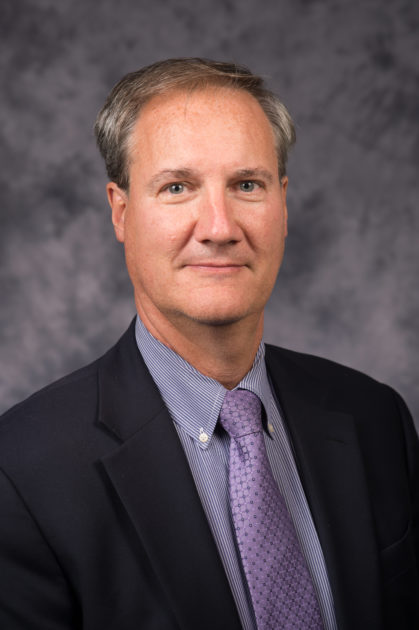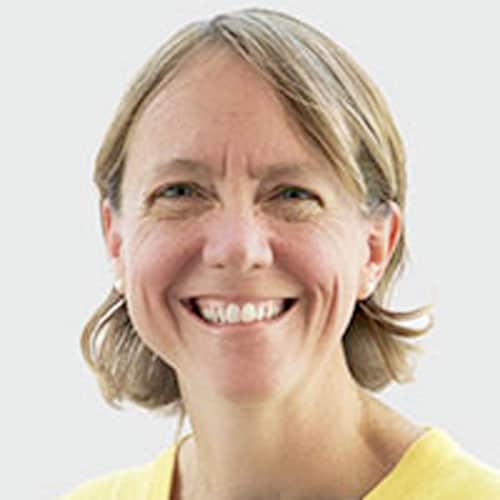Cavanaugh has been the University’s longest-serving leader of EH&S, contributing to numerous expansion and renovation projects over the years.

Mark Cavanaugh, associate vice president of the University of Rochester’s Environmental Health and Safety (EH&S) and fire marshal will retire effective December 2. For two decades he’s led this area, which works to ensure regulatory compliance, promote safety, and minimize hazards to students, faculty, staff, patients, and visitors throughout the University.
“EH&S plays a vital role in the development and implementation of health and safety every day and in every corner of our University,” says Elizabeth Milavec, executive vice president for Administration and Finance and CFO. “Mark’s exceptionally collaborative nature and attention to detail were vital during the pandemic. We are grateful for the leadership, expertise, and numerous contributions he’s made during the past 20 years.”
EH&S Assistant Director Michael Liberty has been named the interim associate vice president and chief safety officer. Liberty, who joined EH&S in 2016, is an expert in exposure assessment and reducing risks to workers. He received both a bachelor’s degree in biology and a master’s degree in industrial hygiene from the University of Rochester, and and holds professional certifications in both industrial hygiene and safety.
Fire Safety Specialist Mark Militello will serve as the University’s interim fire marshal. He first joined EH&S in August 2008 and moved up the ranks of the University’s Fire Safety Unit to become fire safety specialist. He has been responsible for coordinating fire safety activities across the University, including River Campus, Strong Memorial Hospital, the Medical Center and the Eastman Theatre. He earned an associate’s degree in fire prevention technologies from Monroe Community College and currently is a chief of the Victor Volunteer Fire Department.
Cavanaugh, who joined the University as fire marshal and chief safety officer in 1997, has led the department since 2002. “The University is a mini-city with an array of different risks that need to be identified, understood, and mitigated,” he says. His role as the University’s fire marshal, for example, involved overseeing and analyzing the fire inspection and testing programs across the University. EH&S coordinates safety inspections across the University’s campuses, a 10-million square foot area. Cavanaugh, who has been the University’s longest-serving leader of EH&S, also contributed to numerous expansion and renovation projects over the years, including the Wilmot Cancer Center, Golisano Children’s Hospital, outpatient surgical centers, the Eastman Theatre, and many academic and residence hall buildings.
One of his earliest initiatives was in 2005 when he spearheaded the installation of fire sprinkler systems in all residence halls. Although not required by government regulatory agencies at the time, Cavanaugh moved ahead with the multi-year project believing the systems were essential to student safety. “That’s one of the accomplishments I’m most proud of,” he says. “I grew up with firefighters, and my dad going to fire calls.” Over the years, he said, his boyhood interest in firefighting morphed into preventing or mitigating any kind of hazard or emergency.
A culture of problem solving
Under Cavanaugh’s leadership, EH&S maintains an emergency management program that is central to the University’s ability to prepare for and respond to emergencies and disasters. “EH&S is much more than enforcement,” he says. “Collaboration and relationship building has allowed us to move into the role of problem solvers for our constituents.”
That framework was tested during the pandemic with Cavanaugh cochairing the Coronavirus University Response Team (CURT) and serving as incident commander for the University’s emergency operations center. When a vaccine became available, he became the logistics sector chief for the Finger Lakes COVID-19 Vaccine Hub, which supported immunization efforts throughout the region.
“Mark’s longstanding role and experience in the Medical Center allowed him and his team, from day one, to provide the support and guidance we needed to navigate the darkest hours of the pandemic,” says Kathy Parrinello, executive vice president and chief operating officer for Strong Memorial Hospital. “We will miss his expertise and his special knack for collaborating–during the pandemic and for many other emergency management initiatives he led at the Medical Center.”
Cavanaugh’s expertise has been tapped over the years by the National Fire Protection Association World Safety Conference and many community groups, including the emergency services committees for the 1995 Ryder Cup and the 2003 PGA, and the Pittsford Fire Department, where he served as chief and line officer during his 40 years as a volunteer.



